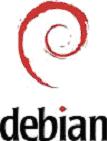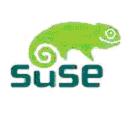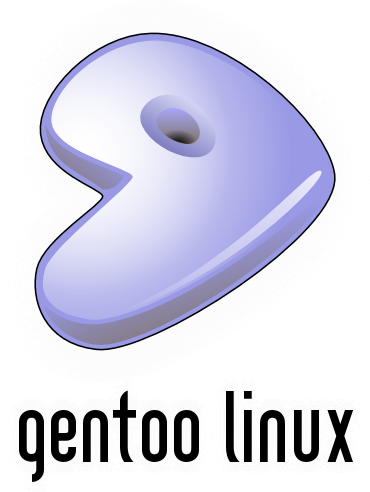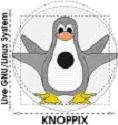Linux again
The article was written for one educational site, so please do not judge strictly.
The material is taken from various online encyclopedias.
Linux

Right now the fashion for open-source products has gone. Especially after the introduction of anti-piracy laws in Russia. Oddly, this fashion has not bypassed our country.
More and more people are switching to unix / linux systems. And how did it all begin?
The linux project began in 1991 with the publication of a message in the Usenet newsgroup comp.os.minix with the following content:
"Hello to everyone who uses minix - I am doing a (free) operating system (just a hobby, it won't be as big and professional as gnu) for clones 386 (486) AT ..."
')
By then, the GNU project had already created a lot of components for a free operating system, but their GNU Hurd kernel was not ready yet. BSD systems at the time could not be used for legal reasons related to the licenses used. Therefore, the empty kernel space for a free OS was taken by Linux and, despite the limited functionality of earlier versions, attracted many developers and users.
Linux is the name of the kernel only, not the operating system. Often, systems based on the Linux kernel are simply called Linux, but most of them are actually called GNU / Linux, since they consist of the Linux kernel and many system libraries and programs written as part of the GNU project.
Now the family of operating systems based on the Linux kernel is the third most popular (0.63%) in the world on the desktop market.
Linux are different:
• Red Hat Linux
• Fedora
• Mandriva Linux
• Debian
• SuSE
• Slackware
• ALTLinux
• ASPLinux
• Knoppix
• Gentoo Linux
• Ubuntu
• Linux XP
• other…
How are they different?
Perhaps it is time to clarify that the name of Linux and this whole project would be correctly attributed only to the OS kernel. The kernel provides other programs with access to computer resources, hardware, but it is not enough for the system to work. You can draw some analogy with the BIOS (basic input / output system) in the IBM PC. The Linux kernel can be called a sort of InternetBIOS, or SuperBIOS of the 21st century: POSIX-compatible, networked, multi-user, with support for almost all file systems and devices. To work, you also need a set of usual Unix programs and utilities. The Linux kernel is part of the GNU project that Richard Stallman started, and, strictly speaking, the full name of the running GNU / Linux OS.
Later, sets of programs ready for installation and configured to work together, began to make out in the form of a distribution kit. When the number of programs in the distribution kit exceeded hundreds, each program began to be formatted as a package ready for installation, and a special installer program tracked the dependence of programs on each other or their conflicts. The first mass distribution was Patrick Volkerding's Slackware. The RPM package format created by Red Hat Sofware and used in their distribution, as well as in Caldera products in many others, including KSI-Linux, the Russian-language distribution of Sergey Kubushin from Kiev, is extremely popular now.
Another universal package format and installer program developed as part of the Debian project. This project is distinguished by its distribution - like GNU and Linux, its members cooperate via the Internet, as well as the scale - over four thousand packages in the latest version. Debian is an international project, includes documentation in many languages, and is free from restrictions on encryption and data protection technologies.
Distributions have greatly simplified installation and first steps in the development of Linux for beginners. An intermediary appeared between the developer of the program and its user - the person accompanying this package, the so-called. maintainer, maintainer. There are countless information and programs on the Internet, and the maintainer does the most important work of finding the most necessary and relevant, and embedding them in a complex system.
And finally, the distributions replicated on CDs have made it possible for millions of users to become familiar with Linux for the first time.
A few words about some of them:
Red hat linux

The Red Hat Linux distribution is one of the most common Linux distributions in the world.
Currently, Red Hat itself has become a commercial distribution, produced by the same company. A non-commercial, freeware version of the same distribution is released under the name Fedora Core.
Debian

Debian GNU / Linux is the largest distribution. It consists of more than 2 thousand packages. The creators of Debian are very sensitive to licensing, so Debian is the most “clean” distribution. Much attention is paid to testing the finished product. Very reliable, easy to administer. Suitable for both server and desktop applications. Debian is available for i386, m86k (amiga, atari, macs), Alpha and Sparc platforms.
It is recommended for those who want to seriously study and work in Linux and for those who are close to the ideas of free software. Due to the complexity of the installation procedure, novice users are advised not to begin their acquaintance with Linux with this distribution.
SuSE

SuSE Linux is one of the most popular distributions in Europe, developed in Germany. Recently, SUSE was bought by Novell, which now releases this distribution called Novell SUSE. The distribution has a very convenient YaST installation and administration program. SUSE Linux will satisfy both newbies and old Linux fans, but it’s still aimed at professionals: programmers and system administrators. Therefore, it can be recommended for responsible tasks, for those who want order in their system and who need corporate support (of course, paid).
Slackware

The simplicity and consistency of the organization of this distribution will allow you to fully understand the device Linux. Most of the settings are made "directly", without additional configurators and other layers. This makes the distribution a bit complicated for beginners, but it is deservedly popular with a large number of users. Using the standard UNIX format tar.gz in installation packages is also quite a handy thing. Packages updates appear regularly. This distribution is usually recommended for those who want to thoroughly deal with Linux.
Mandriva

The Mandriva Powerpack distribution is an excellent choice for someone who has never worked with Linux before, but considers himself an experienced Windows user. This system is easy to install and configure and contains all the necessary applications for everyday work. On the other hand, the distribution also includes many additional tools, in particular, for setting up a server and for web developers. In this case, it’s very good that as long as you don’t need these tools, you may not notice them, but as soon as you need them, you will find that they are already at hand.
Ubuntu

Ubuntu is an operating system that is ideal for laptops, desktops, and servers. Either you use it at home, at school, or at work. Ubuntu contains everything you need for work, from text and email applications to web server software and programming tools.
At the moment is one of the most popular distributions. Ideal for newbies in Linux.
Gentoo

Gentoo (in English - “Dzhintuu”, in Russian - “Ghent”) is a free operating system based on Linux or FreeBSD, which can be automatically optimized and adapted to solve almost any task for any needs. Ultimate customization flexibility, top speed and first-class user and developer community are the characteristics of Gentoo.
Thanks to Portage (Portage) technology, Gentoo can become an ideal secure server, developer workstation, professional desktop system, gaming system, embedded system, or anything else — anything you want. Due to the almost unlimited ability of the distribution to adapt to the needs of the user, we call Gentoo a “metadistribution”.
Live CD Distributions

Virtually any currently released distributions have a modification that runs from a CD-ROM. The most famous (and, apparently, the very first) distribution of this kind is Knoppix.
The material is taken from various online encyclopedias.
Linux

Right now the fashion for open-source products has gone. Especially after the introduction of anti-piracy laws in Russia. Oddly, this fashion has not bypassed our country.
More and more people are switching to unix / linux systems. And how did it all begin?
The linux project began in 1991 with the publication of a message in the Usenet newsgroup comp.os.minix with the following content:
"Hello to everyone who uses minix - I am doing a (free) operating system (just a hobby, it won't be as big and professional as gnu) for clones 386 (486) AT ..."
')
By then, the GNU project had already created a lot of components for a free operating system, but their GNU Hurd kernel was not ready yet. BSD systems at the time could not be used for legal reasons related to the licenses used. Therefore, the empty kernel space for a free OS was taken by Linux and, despite the limited functionality of earlier versions, attracted many developers and users.
Linux is the name of the kernel only, not the operating system. Often, systems based on the Linux kernel are simply called Linux, but most of them are actually called GNU / Linux, since they consist of the Linux kernel and many system libraries and programs written as part of the GNU project.
Now the family of operating systems based on the Linux kernel is the third most popular (0.63%) in the world on the desktop market.
Linux are different:
• Red Hat Linux
• Fedora
• Mandriva Linux
• Debian
• SuSE
• Slackware
• ALTLinux
• ASPLinux
• Knoppix
• Gentoo Linux
• Ubuntu
• Linux XP
• other…
How are they different?
Perhaps it is time to clarify that the name of Linux and this whole project would be correctly attributed only to the OS kernel. The kernel provides other programs with access to computer resources, hardware, but it is not enough for the system to work. You can draw some analogy with the BIOS (basic input / output system) in the IBM PC. The Linux kernel can be called a sort of InternetBIOS, or SuperBIOS of the 21st century: POSIX-compatible, networked, multi-user, with support for almost all file systems and devices. To work, you also need a set of usual Unix programs and utilities. The Linux kernel is part of the GNU project that Richard Stallman started, and, strictly speaking, the full name of the running GNU / Linux OS.
Later, sets of programs ready for installation and configured to work together, began to make out in the form of a distribution kit. When the number of programs in the distribution kit exceeded hundreds, each program began to be formatted as a package ready for installation, and a special installer program tracked the dependence of programs on each other or their conflicts. The first mass distribution was Patrick Volkerding's Slackware. The RPM package format created by Red Hat Sofware and used in their distribution, as well as in Caldera products in many others, including KSI-Linux, the Russian-language distribution of Sergey Kubushin from Kiev, is extremely popular now.
Another universal package format and installer program developed as part of the Debian project. This project is distinguished by its distribution - like GNU and Linux, its members cooperate via the Internet, as well as the scale - over four thousand packages in the latest version. Debian is an international project, includes documentation in many languages, and is free from restrictions on encryption and data protection technologies.
Distributions have greatly simplified installation and first steps in the development of Linux for beginners. An intermediary appeared between the developer of the program and its user - the person accompanying this package, the so-called. maintainer, maintainer. There are countless information and programs on the Internet, and the maintainer does the most important work of finding the most necessary and relevant, and embedding them in a complex system.
And finally, the distributions replicated on CDs have made it possible for millions of users to become familiar with Linux for the first time.
A few words about some of them:
Red hat linux

The Red Hat Linux distribution is one of the most common Linux distributions in the world.
Currently, Red Hat itself has become a commercial distribution, produced by the same company. A non-commercial, freeware version of the same distribution is released under the name Fedora Core.
Debian

Debian GNU / Linux is the largest distribution. It consists of more than 2 thousand packages. The creators of Debian are very sensitive to licensing, so Debian is the most “clean” distribution. Much attention is paid to testing the finished product. Very reliable, easy to administer. Suitable for both server and desktop applications. Debian is available for i386, m86k (amiga, atari, macs), Alpha and Sparc platforms.
It is recommended for those who want to seriously study and work in Linux and for those who are close to the ideas of free software. Due to the complexity of the installation procedure, novice users are advised not to begin their acquaintance with Linux with this distribution.
SuSE

SuSE Linux is one of the most popular distributions in Europe, developed in Germany. Recently, SUSE was bought by Novell, which now releases this distribution called Novell SUSE. The distribution has a very convenient YaST installation and administration program. SUSE Linux will satisfy both newbies and old Linux fans, but it’s still aimed at professionals: programmers and system administrators. Therefore, it can be recommended for responsible tasks, for those who want order in their system and who need corporate support (of course, paid).
Slackware

The simplicity and consistency of the organization of this distribution will allow you to fully understand the device Linux. Most of the settings are made "directly", without additional configurators and other layers. This makes the distribution a bit complicated for beginners, but it is deservedly popular with a large number of users. Using the standard UNIX format tar.gz in installation packages is also quite a handy thing. Packages updates appear regularly. This distribution is usually recommended for those who want to thoroughly deal with Linux.
Mandriva

The Mandriva Powerpack distribution is an excellent choice for someone who has never worked with Linux before, but considers himself an experienced Windows user. This system is easy to install and configure and contains all the necessary applications for everyday work. On the other hand, the distribution also includes many additional tools, in particular, for setting up a server and for web developers. In this case, it’s very good that as long as you don’t need these tools, you may not notice them, but as soon as you need them, you will find that they are already at hand.
Ubuntu

Ubuntu is an operating system that is ideal for laptops, desktops, and servers. Either you use it at home, at school, or at work. Ubuntu contains everything you need for work, from text and email applications to web server software and programming tools.
At the moment is one of the most popular distributions. Ideal for newbies in Linux.
Gentoo

Gentoo (in English - “Dzhintuu”, in Russian - “Ghent”) is a free operating system based on Linux or FreeBSD, which can be automatically optimized and adapted to solve almost any task for any needs. Ultimate customization flexibility, top speed and first-class user and developer community are the characteristics of Gentoo.
Thanks to Portage (Portage) technology, Gentoo can become an ideal secure server, developer workstation, professional desktop system, gaming system, embedded system, or anything else — anything you want. Due to the almost unlimited ability of the distribution to adapt to the needs of the user, we call Gentoo a “metadistribution”.
Live CD Distributions

Virtually any currently released distributions have a modification that runs from a CD-ROM. The most famous (and, apparently, the very first) distribution of this kind is Knoppix.
Source: https://habr.com/ru/post/22568/
All Articles